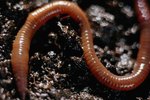Most common pets are either male or female for their entire lives, but a few animal species are capable of changing from one sex to the other. As explained by David J. Allsop and Stuart A. West, in a 2003 issue of “Nature,” sex changes occur in several taxonomic groups, “including fish, echinoderms, crustaceans, molluscs and polychaete worms.” Since 2003, scientists have also documented the phenomenon in several other animals, including a few amphibian and reptile species.
Indeterminate Invertebrates
Although not common pets, water fleas, flatworms, limpets and several other invertebrate species are capable of changing sex. However, at least one type of commonly kept starfish -- the cushion star (Asterina gibbosa) -- changes sex as part of its normal life cycle. Members of this species begin life as females, mature and breed for a brief time, and then become male.
Flexible Fish
Scientists have documented the sex-changing abilities of several fish species, including parrotfish, clownfish and some gobies. Most species capable of changing sex transition from female to male – a pattern called protogyny; however, the opposite pattern – protandry – occurs in a handful of species. In most cases, fish change sexes in response to social circumstances; for example, if a male blue-banded goby (Lythrypnus dalli) dies, one of his female harem members may become a male and take over his duties.
Altered Amphibians
Several frog species can change from one sex to the other – some do so in response to environmental factors, while others change for social reasons. As revealed in a 1998 issue of "Environmental Health Perspectives," a team of researchers led by A.L. Reeder of the University of Illinois at Urbana-Champaign found that polluted habitats may cause northern cricket frogs (Acris crepitans) to change sex. Salamanders exhibit sex-changing abilities as well, as demonstrated by crested newt larvae (Triturus cristatus), who may change sex if exposed to temperature extremes.
By contrast, Afican reed frogs (Hyperolius viridiflavus) occasionally change sex in response to social conditions. As explained by researchers T. U. Grafe and K. E. Linsenmair in a 1989 issue of "Copeia," some female reed frogs became male when housed in tanks composed entirely of females.
Reversible Reptiles
Researchers with the University of Canberra, Australia, and the Australian National University in Canberra, investigated the effects of high incubation temperatures on bearded dragon eggs. Publishing their results in a 2007 issue of “Science,” the team found that despite the fact that bearded dragons are thought to become male or female based on their genes, most bearded dragon eggs incubated between 93.2 and 96.8 degrees Fahrenheit yielded female lizards. This occurred despite the fact that some of these females had genes that should make them male.
Androgynous Avians
Although they do not become genetic males, some female birds may gradually develop male traits, such as male plumage, combs or wattles. However, unlike many other animals who change gender in response to environmental or social stimuli, birds appear to change sex because of disease or dysfunction. Female birds typically have a single functional ovary; the other ovary ceases development early in life. If the functional ovary – typically the left ovary – becomes damaged or fails to work properly, the dormant one becomes active. However, this dormant ovary occasionally functions as a teste, produces male sex hormones and causes the female to develop male traits.



